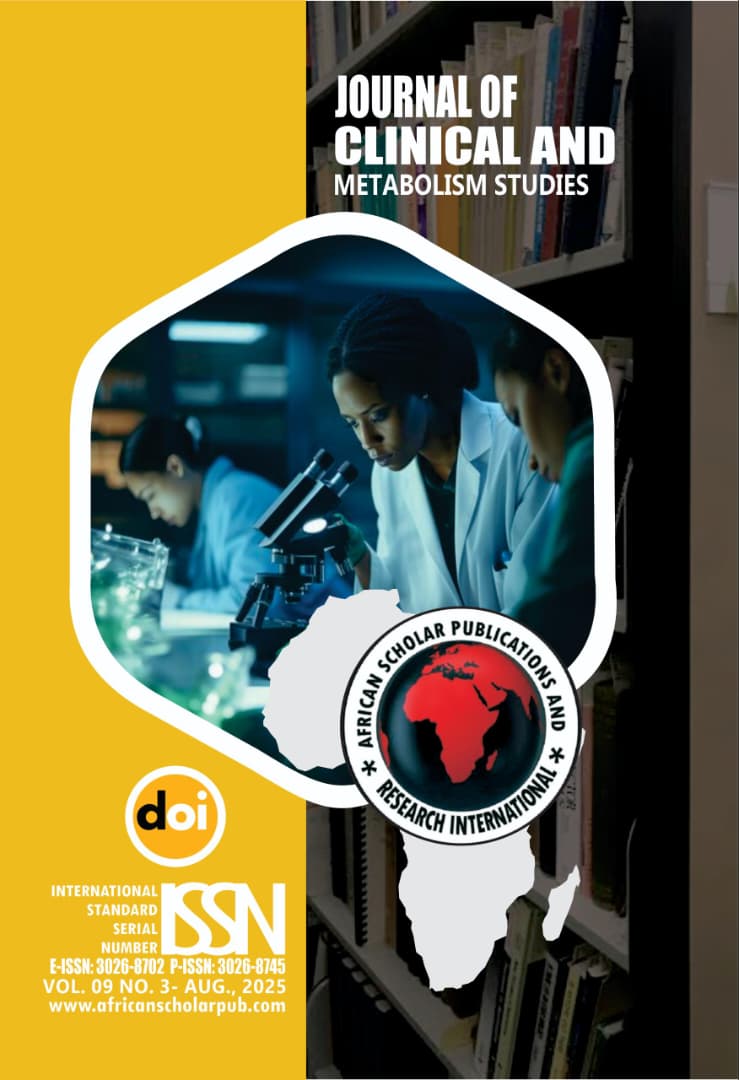Spectrophotometric Determination of the Concentrations of Potassium Bromate (KBrO3) in Breads Sold in Mubi Metropolis, Adamawa State, Nigeria
Abstract
Nine loaves of bread were randomly selected and purchased from bakeries/sales outlets resident in Mubi metropolis. They were dried at 105°C for 24 hours before separately grounded into fine powder and analyzed for the presence of potassium bromate (KBrO3) using the qualitative technique. A purple colour confirmed the presence of KBrO3 before their absorbance was measured at 620nm using a UV-vis spectrophotometer. Results of the analysis showed X1 = 0.0144, X2 = 0.0230, X3 = 0.0470, X4 = 0.0190, X5 = 0.0673, X6 = 0.0013, X7 = 0.0456, X8 = 0.0835 and X9 = 0.0353 respectively. These results were then converted to concentrations (ppm) with reference to a calibration curve constructed for KBrO3 using the pure sample. Results from the studies showed, X1 = 0.0157, X2 = 0.0251, X3 = 0.0513, X4 = 0.0208, X5 = 0.0735, X6 = 0.0014, X7 = 0.0498, X8 = 0.0912 and X9 = 0.0386. The results raise significant health and regulatory concerns. Low level usage can leave traces that pose health hazard (FAO/WHO, 2016), the use of KBrO3 as a flour-treatment agent “is not acceptable” due to detectable residues in a baked bread and associated carcinogenic risk, (WHO/FAO JECFA, 1995). Therefore, the presence of KBrO3 at these levels in breads widely consumed in Mubi underscore the importance of rigorous enforcement and consumer awareness.
Keywords:
Analysis, texture, enhancer, bromate, spectrophotometerDownloads
Downloads
ACCESSES
Published
Issue
Section
License
Copyright (c) 2025 Sayeed, A., Catherine, M., Ethan, W. (Author)

This work is licensed under a Creative Commons Attribution 4.0 International License.















